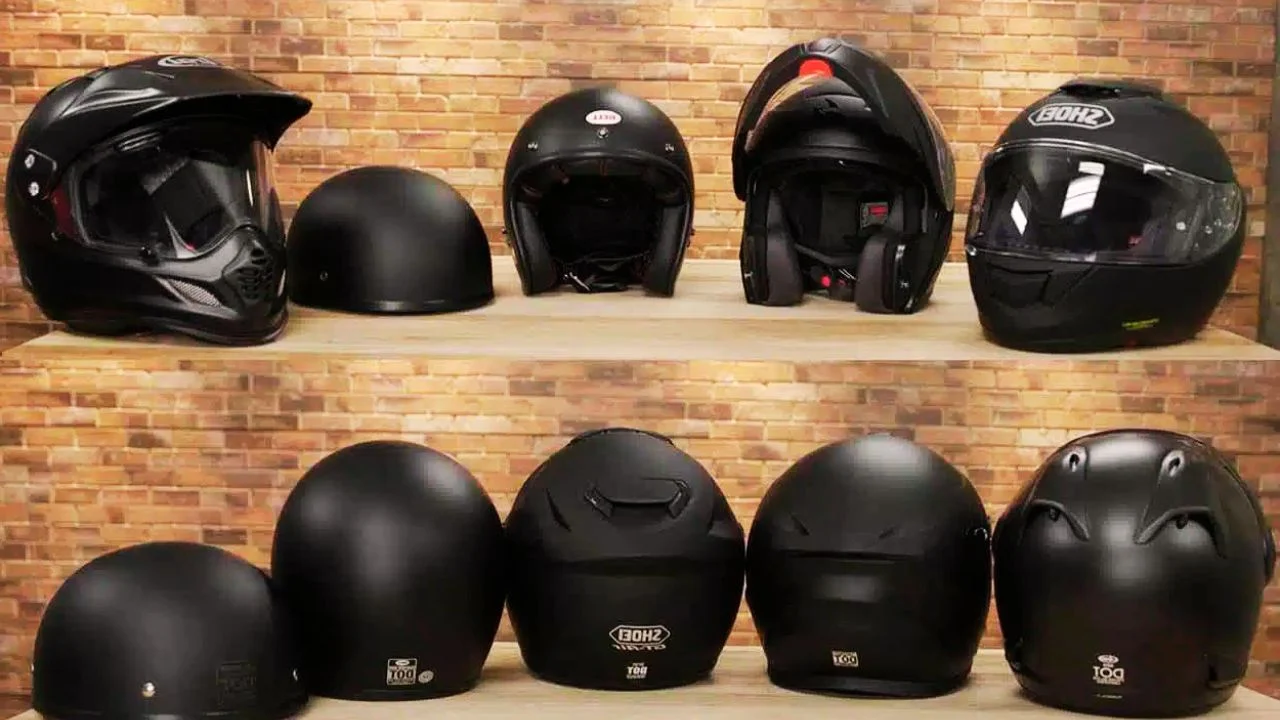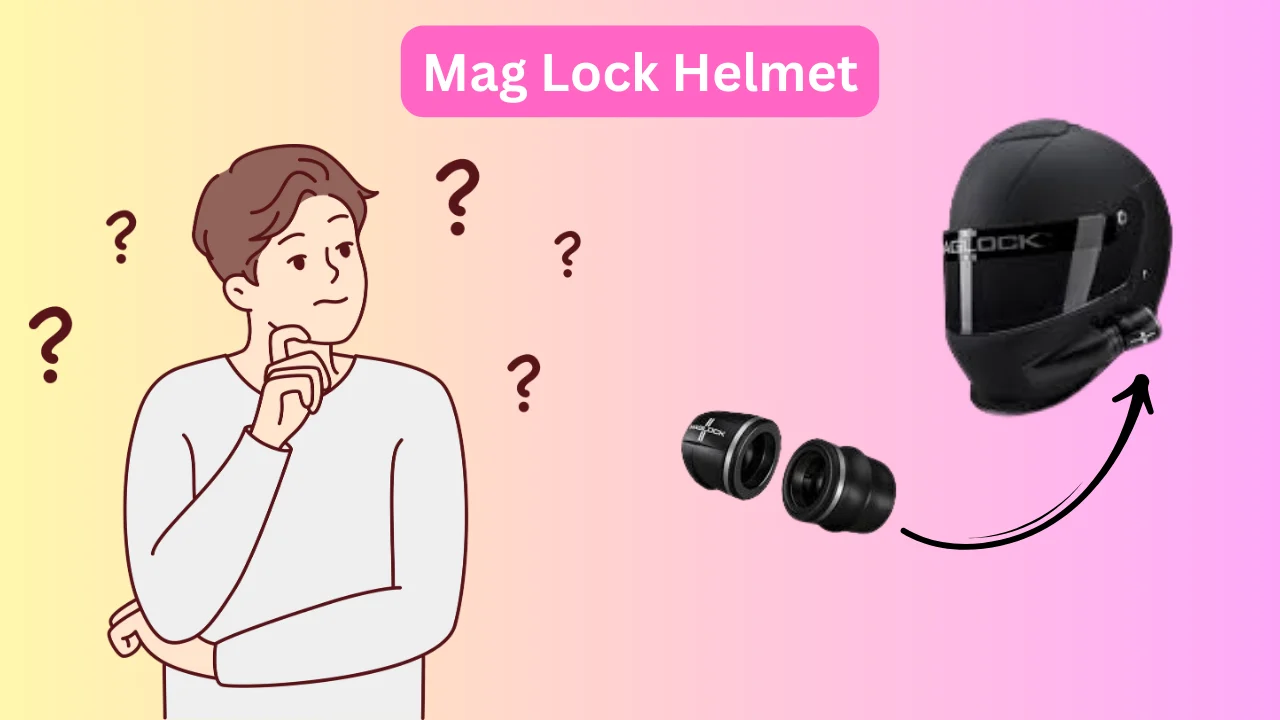I still remember buying my first motorcycle helmet. I was overwhelmed with choices! But trust me, how to choose the right helmet for motorcycle riding isn’t just about style; it’s about safety, comfort, and a perfect fit. A high-quality helmet can reduce the risk of head injuries by 69% and save your life in a crash.
Whether you’re a daily commuter, weekend cruiser, or speed enthusiast, finding a DOT-approved, impact-resistant, and comfortable helmet is a must. Let’s break it down so you can ride with confidence!
| Quick Look: I remember my first ride – exciting but nerve-wracking! A good helmet is essential. How to choose the right helmet for motorcycle riding starts with safety. Certified helmets (DOT, ECE, Snell) reduce head injuries by 69%. Perfect Fit – Helmets should be snug, not loose. Helmet Types – Full-face for protection, modular for convenience, open-face for casual rides. Material Matters – Fiberglass, carbon fiber, or polycarbonate? Lighter helmets reduce neck strain. Extra Features – Anti-fog visors, ventilation, and Bluetooth enhance safety and comfort. |
How to choose the right helmet for motorcycle riding?
- Safety Certifications: Look for helmets with DOT, ECE, or SNELL certifications for safety.
- Fit: Ensure the helmet fits snugly and comfortably, with no gaps.
- Weight: Choose a helmet that weighs between 3-4 pounds for comfort on long rides.
- Ventilation: Consider a helmet with good ventilation to stay cool during long rides.
- Durable Material: Look for helmets made from impact-resistant materials like fiberglass or polycarbonate.
- Helmet Type: Choose a helmet type (full-face, modular, etc.) that suits your riding style and safety needs.
For a more detailed comparison between helmet types, check out our article on Modular vs. Full-Face Helmets.
Key Factors to Consider
Here’s a table to help you how to choose the right helmet for motorcycle riding:
Understanding Different Helmet Types and What You Need to Know?

1. Know the Helmet Types
The first thing to consider is the type of helmet you need. Different types offer different levels of protection and comfort.
Full-Face Helmets:

These provide the most protection. They cover your entire head, including the chin. Full-face helmets are great for both street and track riders. They reduce wind noise and offer excellent protection in the event of a crash.
Modular Helmet

These helmets are a hybrid of full-face and open-face helmets. They have a flip-up front for more ventilation. Modular helmets are versatile, but they tend to be a bit heavier.
Open-Face Helmet

These cover the top, sides, and back of the head but leave the face exposed. They are lightweight and provide great ventilation but offer less protection than full-face helmets
Half Helmet

As the name suggests, these helmets only cover the top of the head. They are great for short rides and warm weather but don’t provide as much protection for high-speed riding or in an accident.
5. Dual-Sport / Off-Road Helmet

If you love off-road riding or adventure biking, this helmet is your best friend. It’s like a mix between a motocross helmet and a full-face helmet, built to handle dust, dirt, and rough terrains.
Best for: Dirt bike riders, trail bikers, and adventure riders
Key Features:
- Extended visor to block out the sun and dirt
- Larger eye openings—made for goggles instead of visors
- Super lightweight (3–3.5 lbs or 1.3–1.6 kg) for better head movement
- Superior ventilation to keep you cool on dusty trails
Comparison Table
I personally recommend full-face helmets for the best protection, especially for new riders or anyone who rides long distances.
2. Safety Certifications Matter
How to choose the right helmet for motorcycle? One of the first things you should look for when choosing a helmet is safety certification. This ensures the helmet meets the required standards for impact protection.
There are a few safety certifications to look out for:
- DOT (Department of Transportation): This is the minimum safety standard in the United States. Helmets with this certification have passed the necessary crash tests.
- ECE (Economic Commission for Europe): Commonly used in Europe, this standard is similar to DOT but includes more testing procedures.
- Snell: Known for its more rigorous testing, Snell-certified helmets provide a higher level of safety.
A helmet that carries one of these certifications gives you peace of mind. For example, 2019 statistics show that motorcycle helmets reduce the risk of head injury by up to 69%. That’s a huge difference when you’re on the road.
For more detailed information on Snell-certified helmets, visit Snell Memorial Foundation Helmet Safety.
3. The Right Fit is Crucial
It’s tempting to grab the first helmet that fits your head and looks cool. But the fit is the most important factor in choosing the right helmet for motorcycle riding.
If a helmet doesn’t fit properly, it won’t provide the protection you need. A good helmet should fit snugly around your head, without being uncomfortable. There shouldn’t be any spaces between your head and the inner lining.
Here’s a simple way to find the right size:
- Measure your head: Use a flexible tape measure to measure the circumference of your head, just above your eyebrows. Compare this measurement with the manufacturer’s sizing chart.
- Try it on: When you put the helmet on, it should feel snug but not tight. You shouldn’t be able to move it around easily. If you can, it’s too loose.
Remember, the helmet should fit your head shape as well.
Some helmets are designed for oval-shaped heads, while others suit rounder shapes. It’s worth spending a little extra time to get the right fit.
For a detailed guide on how a motorcycle helmet is supposed to fit, check out our Complete Guide to Motorcycle Helmet Fit.
4. Comfort Features Matter
When riding for long periods, comfort is key. A helmet that doesn’t feel comfortable will distract you and affect your concentration on the road. Here are a few comfort features to look out for:
- Padding: Look for removable, washable padding. It helps maintain hygiene and allows for a more comfortable ride.
- Ventilation: Proper airflow is important to keep you cool, especially during hot weather. Most helmets have built-in ventilation systems to let fresh air in while allowing hot air to escape.
- Visor: Choose a helmet with a visor that doesn’t fog up easily. Anti-fog visors are a great option for keeping your view clear, especially during wet weather.
The right helmet will keep you comfortable while offering protection. For instance, I always look for helmets with adjustable vents to stay cool on long rides.
5. The Weight of the Helmet
The weight of the helmet can make a big difference, especially for long-distance riders. A heavier helmet can cause neck strain and make your ride uncomfortable. Ideally, your helmet should weigh between 3 and 4 pounds.
A lighter helmet reduces neck fatigue, but be careful—sometimes, lighter helmets may be made of cheaper materials that don’t provide the same level of protection as heavier ones. Always balance weight with safety.
6. Helmet Material and Durability
The material of the helmet plays a huge role in its overall safety and durability. Helmets are usually made from one of the following materials:
- Polycarbonate: A common material for entry-level helmets. It’s affordable but tends to be heavier.
- Fiberglass: Lighter than polycarbonate, fiberglass is often used in mid-range helmets.
- Carbon Fiber: The lightest and most durable material, often found in high-end helmets. Carbon fiber helmets offer the best protection but come at a higher price.
For a balance of price and performance, I usually opt for fiberglass helmets. But if you have the budget, carbon fiber is a top choice for serious riders.
7. Consider Your Riding Style and Environment
Where you ride and how you ride can also influence your helmet choice. If you’re riding on highways at high speeds, a full-face helmet will offer the most protection. On the other hand, if you’re riding in a city with frequent stops, an open-face helmet might be more comfortable.
Consider the weather conditions in your area as well. If it’s hot and humid, make sure your helmet has good ventilation to keep you cool. If you ride in cooler climates, a helmet with a shield or extra padding will keep you warm.
8. Price vs Quality
It’s easy to be tempted by cheap helmets, but remember that when it comes to motorcycle safety, you get what you pay for.
Helmets that cost less often lack the high-quality materials, advanced safety features, and comfort options that pricier helmets offer. However, that doesn’t mean you have to break the bank. You can find great helmets that balance quality and cost.
Just ensure you’re buying from a reputable brand, and don’t compromise on safety. For guidance on how much to spend on a motorcycle helmet, check out our article on How Much Should I Spend on a Motorcycle Helmet?.
| Key Takeaways: Choose a helmet type that matches your riding style and offers the best protection. Always prioritize proper fit and safety certifications for maximum protection. Balance comfort, weight, and durability to ensure a comfortable and safe ride. |
Conclusion:
How to choose the right helmet for motorcycle? Choosing the right helmet is crucial for safety and comfort. Helmets can reduce head injury risk by up to 69%, which is why I always make sure I’m picking the best one. Focus on finding a helmet that fits well, meets safety certifications like DOT or Snell, and offers comfort features like ventilation.
I personally aim for a weight between 3 and 4 pounds to avoid neck strain on long rides. Don’t compromise on quality, as your helmet is your first line of defense. Keeping these factors in mind will help you pick the best helmet for a safe and enjoyable ride.
FAQs:
1. What is the safest type of motorcycle helmet?
The safest type of helmet is the full-face helmet, as it offers maximum protection by covering your entire head, including the chin.
2. How do I know if my helmet fits properly?
Your helmet should fit snugly, with no gaps between your head and the inner lining. It should feel firm but comfortable without being too tight.
3. What safety certifications should I look for in a helmet?
Look for DOT (Department of Transportation), ECE (Economic Commission for Europe), or Snell certifications. These ensure the helmet meets the necessary safety standards.
4. How much should a motorcycle helmet weigh?
A good helmet typically weighs between 3 and 4 pounds. Lighter helmets reduce neck fatigue, but heavier helmets may offer better protection.
5. Can a helmet reduce head injuries?
Yes, helmets can reduce the risk of head injury by up to 69%. A well-fitting, certified helmet is essential for safety, as it absorbs impact and protects your head in case of an accident.





